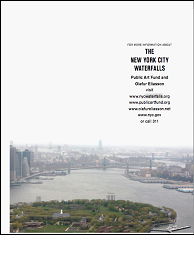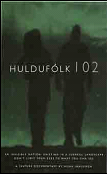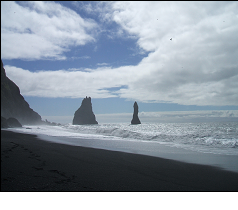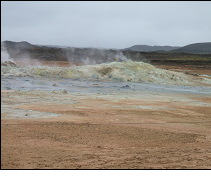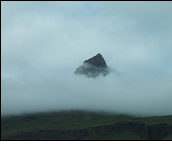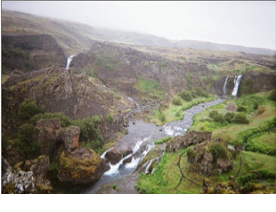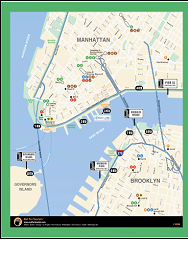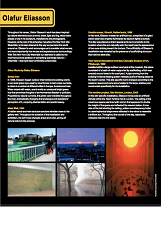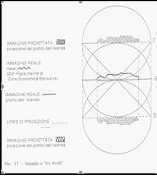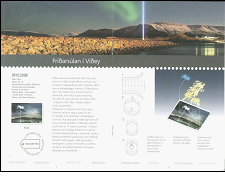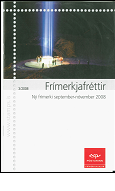“AN ALMOST IRRESISTIBLE IMPULSE TO TRAVEL”
Little Ida Laura Reyer was born in Vienna in 1797, into a wealthy merchant family; she was the third born, along with six brothers and a sister. The father, Aloys, educated his children regardless to their gender: they all were taught solid values of honesty and loyalty, while they were also required to exercise thrift, to harden their physique and learn to resist pain: “I was not shy – Ida writes in her autobiography – but as wild as a boy, more courageous and bolder than my older brothers”(Pfeiffer 1881:14). In 1806 her father’s death put an end to this situation, and the mother tried to turn her into a heiratsfähig, a girl ready for marriage: Ida had to wear women’s clothes, learn to play the piano, apply herself to knitting and embroidery. She reacted harshly to these impositions, resorting to cut her fingers and burn her hands with the wax of the seals in order to avoid performing these typically female activities.
An important figure in her education was Franz Emil Trimmer, her tutor: sensitive and open, he not only instructed her in the subjects suitable for a girl, but also provided travel books, that revealed to her an exotic world of adventures. Young Ida fell madly in love with him, though she couldn’t marry him because of their different social status, and eventually Trimmer was dismissed. She reacted rejecting a series of marriage proposals, until she finally agreed to marry Mark Anton Pfeiffer, of Lviv, a wealthy widower 24 years her senior. She moved to Lviv and gave birth to two sons and a daughter; the girl died soon after birth. Her husband, an honest lawyer, was wrongly involved in a serious case of corruption, so Pfeiffer had to support the family budget by informally giving drawing and music lessons to the children of the city’s wealthy middle class. Partly due to these financial difficulties the couple separated, albeit unofficially, and in the early 1820s the husband moved to Galicia, Switzerland and Vienna to look for a job, while Ida took care of the education of their two sons. In 1831 her mother died, leaving a small income that allowed her to return to Vienna and offer her two children a proper education.
After her husband’s death in 1838, with her children now adults, Pfeiffer considered she had accomplished her family commitments. During a family trip to Trieste, she saw the sea for the first time, and an “almost irresistible impulse to travel”(Pfeiffer 1861:38) awakened her passion for travel and adventure. Some factors, in addition to the modest income, favoured her independence: first of all, the severe education received during her childhood had accustomed her to live thriftily; besides, Pfeiffer always managed her meagre assets judiciously. Furthermore, despite living in a bourgeois environment that provided for a rigid separation of gender-based roles, she managed to exploit the relative freedom granted by advanced age: social control over elderly women was indeed considerably milder, therefore she no longer had to worry about her physical appearance, and she enjoyed more freedom in both behaviour and opinion.
Her adventures could begin: after Palestine she reached Iceland in 1845, then left for two world tours in 1846 and 1851, and a last trip to Madagascar in 1856; in 1858 she had to return to Vienna, where she died in October because of malaria. Probably due to the importance of her other destinations, her itinerary in the Northern European regions soon fell into oblivion. However, Iceland was a sort of training ground that turned her into an experienced traveller, practicing field studies in natural sciences, and forerunning such disciplines as ethnology and social sciences.
CONTEXTUALIZATION: A WOMAN TRAVELLER’S ETIQUETTE
As Carl Thompson has indicated, “an individual experience and representation of travel is shaped by multiple, intersectional factors, including not only gender, but also race, age, class, wealth and status, education, political and religious views, ideals and beliefs” (Thompson 2017:132). This is also the case of Pfeiffer who, as shown in this paper, faced several difficulties as a traveller. However, when she renders her experience in her travelogue her style shows she is a woman of her times, aware of the strict norms that ruled women’s writing. These norms were explicitly expressed by some British women reporters, who recommended humility as a major requirement to women travellers, as well as to women travelogue writers. As an example, in “Lady Travellers”, an article published in 1845 by the renowned “Quarterly Review”, the author, Lady Eastlake, did not hesitate to make fun of the excesses of travelling ladies: “France, Germany, Switzerland, and Italy, no longer count in a fine lady’s journal. Trieste is their starting-post, not Dover; and Constantinople, Jerusalem, and Cairo, the cities they desire to see, ‘and then die,’ or return home and publish, as the case may be” (Eastlake 1845:98). Although this may seem to be the case of Ida Pfeiffer, who started travelling eastwards after a short trip to Trieste, the accuracy of her travelogue refutes Lady Eastlake’s assumptions.
Lady Eastlake also proves very critical when disapproving ladies travelling in luxury after wealthy husbands. However, overall, she is far from considering travelling women useless: instead, she acknowledges their presence as crucial in any exotic environment, as they “demonstrate an ability to evaluate internal experiences”(ibidem). Furthermore, only women are able “to sort out all kinds of details”(ibidem) and to understand even accidental events, because they are more endowed with sensitivity and accuracy than men. Where does their ability to observe, write down and rework details come from? Lady Eastlake confidently exposes her theory: it is everyday life that makes them so attentive. The same ability learnt during household activities, “counting canvass stitches”(ibidem) is evident in their travelogues, and turns into a detailed communicative capability, rendered through a light, brilliant and clear narrative. “Every country has a home life as well as a public life, and the first is quite necessary to interpret the last. Every country, therefore, to be fairly understood, requires reporters from both sexes” (ibid.:16), says the author, adding that female presence is also crucial “for the good of the public” (ibidem).
Even when it comes to education Lady Eastlake replies to the objection concerning women’s lack of it: she doubts that it is as scarce as believed; above all she does not consider it important; on the contrary, the absence of a precise goal, which is a consequence of women’s self-made, random education, represents one of the most charming parts of female travelogues. Last, but not least, women’s deep knowledge both of human nature and of modern languages allow them to communicate abroad more suitably than men.
A WOMAN WRITER’S DEFENCE
Ida Pfeiffer fulfils most of the requirements Lady Eastlake recommends to women travelogue writers: she speaks foreign languages, she is a good observer, she is an intuitive person.
Nonetheless, she feels urged to justify her passion for travelling, an activity unsuitable for a woman.
As she herself puts it in the Preface to Visit to Iceland and the Scandinavian North, Pfeiffer must not be judged as a woman who “only undertakes these journeys to attract attention”( Pfeiffer 1853:4); on the contrary, since she was “but a little child, [she] had already a strong desire to see the world”(ibid.:5) and later she took every opportunity to travel, settling down only when it was necessary for her family; eventually, she declares, “when my sons’ education had been completed, I was living in peaceful retirement, the dreams and aspirations of my youth gradually awoke once more. I thought of strange manners and customs, of distant regions, where a new sky would be above me, and a new ground beneath my feet” (ibidem).
Moreover, her first journey to Palestine had persuaded her that her passion for travelling was neither “tempting Providence”, nor just the longing “to be talked about” (ibid.:7). Later, when she decided to continue travelling, she had a sound reason to choose Iceland: she wanted “to find Nature in a garb such as she wears nowhere else” (ibid.:10). The capital letter in Nature shows the traveller’s main interest, while the use of the feminine personal pronoun “she” and the allocation of a unique garb implies a female gaze on the environment.
The Preface ends with a request to an idealized reader: “And now, dear reader, I would beg thee not to be angry with me for speaking so much of myself; it is only because this love of travelling does not, according to established notions, seem proper for one of my sex, that I have allowed my feelings to speak in my defence. Judge me, therefore, not too harshly; but rather grant me the enjoyment of a pleasure which hurts no one, while it makes me happy” (ibid.:6).
Such a request could be often found in women’s travelogues, worried as they were to avoid focussing the readers’ attention more on themselves than on their destination, and willing to prevent any criticism: one example for all, Mary Wollstonecraft Advertisement in Letters written During a Short Residence in Sweden, Norway and Denmark, where she asked her readers to forgive her, unable to “avoid being continually ‘the little hero’” of her narrative (Wollstonecraft 2009:A2). As Kirsti Siegel maintains, “to get an audience, a woman needed to provide material that was reasonably exciting; to keep an audience, she needed to remain a lady” (Siegel 2004:2).
Eventually, Pfeiffer also pointed out that, being born in the last years of the previous century, she was allowed to “travel ALONE”(Pfeiffer 1853:4, capital letters by the Author), which shows an awareness of her high degree of independence, and matches with the consciousness of her extraneousness, of her awareness to cast an external gaze when observing her destination, “a gaze built in relation to its opposite” (Aime-Papotti 2012: XII): “I had seen things which never occur in our common life, and had met with people as they are rarely met within their natural state’”(Pfeiffer 1853:204), Pfeiffer concluded at the end of her travelogue.
AN ITINERARY BETWEEN IMAGINATION AND SCIENCE
Pfeiffer left Vienna on April 10th, 1845, to reach Copenhagen through Prague, Berlin, and Hamburg; there she had to wait for a cargo to Iceland, and she left on April 26th; she landed on the island on May 15th, to remain there until July 29th. After exploring Iceland, Pfeiffer ended her Nordic tour in Scandinavia, visiting Christiania, Göteborg, Stockholm, Uppsala and the mine district of Danemora in Sweden. Eventually she returned to Vienna via Hamburg and Berlin on October 4th, 1845.
In Iceland she was accompanied by local guides, and she proudly stated to have visited ‘most’ of the island: “I made excursions to every part of Iceland, and am thus enabled to place before my readers, in regular order, the chief curiosities of this remarkable country. I will commence with the immediate neighbourhood of Reikjavik” (Pfeiffer 1853:62). However, due to the extreme limitation of the road network at the time, her itinerary shows that she only visited the south-western area, starting with Reykjavik and the island of Vidöe (Viðey), then Krýsuvík (ibid.:19-77); on a second journey she started from the Þingvellir, reached Síðumúli and Surtshellir lava cave (ibid.:78-114); a last journey led her to see more geysers and ascend to the Hecla volcano (ibid.:115-127).
Whereas, at the time of her visit, Iceland “was represented […] as the actual seat of accomplished masculinity” (Bassnett 1996:170), her own narrative starts with the personification of a feminized Nature: “I chose Iceland for my destination, because I hoped there to find Nature in a garb such as she wears nowhere else” (Pfeiffer 1853:6). Pfeiffer travels to an idealized ‘promised land’: “I feel so completely happy, so brought into communion with my Maker, when I contemplate sublime natural phenomena, that in my eyes no degree of toil or difficulty is too great a price at which to purchase such perfect enjoyment” (ibidem). In this romanticized frame the author emerges as the main character: the reader is immediately aware of her role in an exacting journey, of her ambitious expectations, of her aspiration to feel closely linked to the Supernatural. Therefore, even before landing, she carefully shares her enthusiasm with the readers, “to celebrate the local while contemplating the universal” (Blanton 2011:XI).
In this perspective, Pfeiffer’s travelogue appears to promise what Paul Fussel maintains: “Travel literature mediates between two poles: the individual physical things it describes, on the one hand, and the larger theme that is ‘about’ on the other” (Fussel 1987:126).
Besides idealizing her destination, Pfeiffer was also aware of her lack of scientific preparation to face such a demanding voyage: before leaving Vienna she thus learned natural sciences and the basics of taxidermy and botany, some rudiments of photography, English and, as Iceland was ruled by Denmark at the time, Danish.
Her models were those written by male explorers like Uno von Troil (in Iceland in 1772) and Steuart Mackenzie (there in 1810). These well-known volumes provided references and a suitable theoretical support to the historical, geographical, and cultural digression of about thirty pages that introduce her travelogue (Pfeffer 1853:38,131,218). The book then proceeds with eleven chapters, for a total of almost four hundred pages, describing her travel and exploration, accompanied by precise mileage tables of travelling, detailed expense reports, an Appendix on salaries of the Danish Military and two Catalogues of the plants and animals encountered and classified by her during the journey.
Overlooking Lady Eastlake’s statements, that recommended anonymity and nicety to a lady travelogue writer, Pfeiffer succeeded in publishing a complete treaty, that could be placed among the few existing ones about Iceland.
IDENTITY AND GENDER CONSCIOUSNESS
Pfeiffer seems to have a clear notion of her identity as a modern traveller: she perceives herself as an active observer, continuously interacting with the natural environment[1] pleasantly surprised with the oddity of the coast: “The shores of Iceland appeared to me quite different from what I had supposed them to be from the descriptions I had read.[2] […] I had fancied them naked, without tree or shrub, dreary and desert; but now I saw green hills, shrubs, and even what appeared to be groups of stunted trees […] As we came nearer, however, I was enabled to distinguish objects more clearly, and the green hills became human dwellings with small doors and windows, while the supposed groups of trees proved in reality to be heaps of lava, some ten or twelve feet high, thickly covered with moss and grass. Every thing was new and striking to me; I waited in great impatience till we could land” (ibid.:38). Pfeiffer is not disappointed with the difference between her imagination and the reality and does not hesitate to communicate her eager feeling to explore this unknown territory, describing the nature in general as well as mentioning odd, surprising details to help the readers depict what she actually sees, and share her amazement.
Conversely, when it comes to social interaction Pfeiffer’s expectations are disappointed and she soon has to face the perplexed attitudes of the local population. Whereas, as an experienced traveller, she is used to perform an active role as an observer, as a newcomer she becomes an exotic object of observation for the citizens of Reykjavik: a woman travelling on her own, openly declaring her scientific purposes, turns out to be an ambiguous figure, and the locals’ weird feeling of unease results in dismay and indifference, causing Pfeiffer’s greatest difficulties. A suitable hospitality would be crucial for this lone traveller, who is self-financing her adventure; instead, she is ignored by the narrow-minded citizens and struggles to find a decent, not too expensive accommodation. Eventually she is hosted by another foreigner, an immigrant from Holstein, Herr Bernhoft, the city’s baker. In his house Pfeiffer will experience a warm welcome, the comfort of speaking her native language with his family, while the man will be of help in her search for insects and plants.
Her meetings with more cultured inhabitants of Reykjavik emphasize her cultural inadequacy. These people are quite disappointed because of her lack of academic culture, indirectly comparing her to the few male scholars who had visited Iceland. As she reports, “[they] expected to find me aware of a certain number of things generally studied only by men; they seemed to have the idea that women abroad were as learned as men. So, for example, the priests always asked me if I spoke Latin, and they seemed very surprised to find that I didn’t know it“(ibid:96). Consequently, she feels them hostile and even judgemental: “the so-called cultivated classes” assume a disagreeable “certain air of dignity […] an air which is apt to degenerate into stiffness and incivility” (ibid.:46).
Eventually, she remains isolated: “My visits were unreturned, and I received no invitations, though I heard much during my stay of parties of pleasure, dinners, and evening parties” she complains; “Had I not fortunately been able to employ myself, I should have been very badly off” (ibid.:47).
As Virginia Woolf asserts, “it is fatal for anyone who writes to think of their sex” (Woolf 1929:87). Surpisingly, Pfeiffer seems particularly challenged when dealing with other women, who pretend to ignore her: “Not one of the ladies had kindness and delicacy enough to consider that I was alone here, and that the society of educated people might be necessary for my comfort” (ibid.: 108). She is more indulgent with men’s attitude, who obviously ignore her because of her age: “I was less annoyed at the want of politeness in the gentlemen; for I am no longer young, and that accounts for every thing. When the women were wanting in kindliness, I had no right to expect consideration from the gentlemen”(ibidem). Overall, she concludes bitterly: “I tried to discover the reason of this treatment, and soon found that it lay in a national characteristic of these people—their selfishness (ibid.:48).
Pfeiffer’s positioning changes when she relates with other representatives of the Icelandic society. After Donna Haraway’s statement of “partiality” (Haraway 1988:589), the author’s position acquires a different value in relation to different contexts. The men who are in a close contact with her, like guides and travel companions, experience a sense of inferiority because of her practices; they are confused and a little suspicious about her collecting samples of plants and minerals, and often comment dubiously about her frequent habit of taking notes: “They began to whisper one to another, “She writes, she writes,” and this was repeated numberless times” (Pfeiffer 1853:74).
Her role overturns outside the bourgeois milieu of the city, when she is seen as a kind of sorceress by the peasants. These people bestow unusual, almost magical powers to this lonely traveller: Pfeiffer is taken to Krisuvik leper colony to exercise her alleged thaumaturgical powers (ibid:170); even in the city, she maintains, “in the course of one of my solitary wanderings about Reikjavik, on my entering a cottage, they brought before me a being whom I should scarcely have recognised as belonging to the same species as myself, so fearfully was he disfigured by the eruption called ‘lepra’” (ibid.:96).
Once back to Reykjavik from her excursions, Pfeiffer suffers another reversal of roles, and the careful observer of natural phenomena is again suspiciously observed: because of the tanned skin due to her excursions, she had to bare her arm “to prove to them that [she] did not belong to the Arab race” (ibid.:123). Besides, it is in the company of other women that she feels the harsh burden of ageing: “dame Nature always treats people of my years very harshly, and sets a bad example to youth of the respect due to age”, she comments when Icelandic girls “seemed to gather no very high idea of the beauty of my countrywomen from my personal appearance” (ibidem).
Eventually, Pfeiffer notices that also her thriftiness hampers a proper social integration: “To be well received here it is necessary either to be rich, or else to travel as a naturalist. Persons of the latter class are generally sent by the European courts to investigate the remarkable productions of the country. [Naturalists] collect many minerals, birds, &c.; they bring with them numerous gifts, sometimes of considerable value, which they distribute among the dignitaries; they are, moreover, the protagonists of many amusements, and also of many dances, etc.; they buy whatever they can get for their files and always travel in company; they have a lot of baggage with them, and consequently require a lot of horses, which cannot be rented in Iceland, but must be bought. On such occasions everyone here becomes a merchant, offers of horses, and containers arrive from all sides. It wasn’t like this with me: I didn’t throw parties, I didn’t bring gifts, I didn’t arouse expectations; and therefore they left me to myself” (ibid.:48); she concludes bitterly that economic availability is the most important factor for a successful trip to Iceland.
THE WOMAN AND THE SCIENTIST
Pfeiffer’s narrative alternates poetic images to more scholarly ones, integrating the gaze of a woman traveller to scientific, objective observations. As she had been educated to adapt to changes since her childhood, she does not encounter any difficulty in adjusting to the white night; “At first it appeared strange to me to go to bed in broad daylight; but I soon accustomed myself to it” (ibid.:56), she states plainly. Later, when she explains the phenomenon to her readers, she engages their imagination: “To-day I still rose with the sun; but that will soon be a difficult one matter to accomplish; for in the north the goddess of light makes amends in spring and summer for her shortcomings during the winter” (ibid.:24). Here the author resorts to a personification, evoking the “goddess of light” to involve her readers’ emotions, while later she resumes her role of accurate scholar to show the practical advantage of this long-lasting light: “During my stay in Iceland, from the 15th of May to the 29th of July, I never retired to rest before eleven o’clock at night, and never required a candle. In May, and also in the latter portion of the month of July, there was twilight for an hour or two, but it never became quite dark. Even during the last days of my stay, I could read until half-past ten o’clock” (ibid.:56).
Also when she shows her research methods and describes the way she collects flowers and insects Pfeiffer is well aware of her identity as a scientist: “I picked all the buttercups I could find growing on the grave, and preserved them carefully in a book” (ibid.:126) or, alternatively, “took [them] home to preserve in spirits of wine” (ibid.:66).
The author performs her didactic role in the description of geysers, when she mingles her narrative discourse to the Romantic idea of the sublime in nature, as defined by Edmund Burke: an unreal landscape, that arises both astonishment and terror at the same time. In the midst of “numerous basins filled with boiling water […] as if the interior of the mountain had been a boiling caldron […] boiling mud”(ibid.:72-73), geysers appear so intense that “the bubbling and hissing of the steam, added to the noise of the wind, occasioned such a deafening clamour […] that I was very glad to leave the place in haste” (ibidem). This experience is repeatedly described, using both visual images and sounds, conveying heath as well as discomfort: “columns of smoke and boiling springs burst forth” (ibid.:85). Observing the geyser in action, the explorer highlights her amazement: here again the author arouse her readers’ emotions personifying natural events: “All my expectations and suppositions were far surpassed. The water spouted upwards with indescribable force and bulk; one pillar rose higher than the other; each seemed to emulate the other. […] Without exaggeration, I think the largest spout rose above one hundred feet high, and was three to four feet in diameter” (ibid.:109).
Such a “pilgrimage to the smoking mountains” (ibid.:72), where Pfeiffer gets immersed in hot mud up to her ankles, reconnects her with her own female positioning: a “source of great discomfort is to be found in the long riding-habit. It is requisite to be very warmly clad; and the heavy skirts, often dripping with rain, coil themselves round the feet of the wearer in such a manner, as to render her exceedingly awkward either in mounting or dismounting. The worst hardship of all, however, is the being obliged to halt to rest the horses in a meadow during the rain. The long skirts suck up the water from the damp grass, and the wearer has often literally not a dry stitch in all her garments” (ibid.:61).
Albeit her main purpose is to convey scientific observations, Pfeiffer cannot avoid to describe the discomfort she experiences as a woman: even riding her small Icelandic horse, “careful and free from vice” is exhausting; “it carried me securely over masses of stone and chasms in the rocks, but I cannot describe the suffering its trot caused me” (ibid.:64). She has to adopt an extremely uncomfortable position, on a special “Icelandic” saddle, with both legs on the same side: she complains that “All the rest of the party had good English saddles, mine alone was of Icelandic origin […] With much difficulty I trotted after the others, for my horse would not be induced to break into a gallop” (ibid.:65). Neither she can feel at ease during the frequent stops to relieve the horses, as her woman’s clothes hamper her: “the heavy skirts, often dripping with rain, coil themselves round the feet of the wearer in such a manner, as to render [a woman] exceedingly awkward either in mounting or dismounting.” (ibid.:61).
Despite describing her fatigue and discomfort, Pfeiffer is also able to turn into self-irony when complaining about the rainy weather: “If I felt thirsty, I had only to turn round and open my mouth” (ibid.:100); or about her physical appearance, so changed because of the harshness of the climate: “I was very brown, my lips were cracked, and my nose, alas, even began to rebel against its ugly colour. It seemed anxious to possess a new, dazzling white, tender skin, and was casting off the old one in little bits” (ibid.:123).
Ultimately, she resumes her role of scientist and provides an accurate timing of the event, definitely deflating it: “Fortunately I had looked at my watch at the beginning of the hollow sounds, the forerunners of the eruption, for during its continuance I should probably have forgotten to do so. The whole lasted four minutes, of which the greater half must have been taken up by the eruption itself” (ibid.:109).
The horrid and frightening aspects of nature in a continuous, surprising activity arise again the author’s emotions in a turmoil during the excursion to the Hecla volcano; here she plays with extreme contrasts, between “lava of a very dark, nearly black colour” (ibid.:124) and the whiteness of snow in a blinding landscape; the effect of this desolate panorama is depressing: “At every fresh declivity new scenes of deserted, melancholy districts were revealed to us; every thing was cold and dead, every where there was black burnt lava. It was a painful feeling to see so much, and behold nothing but a stony desert, an immeasurable chaos” (ibid.:119).
Eventually, once on top, Pfeiffer’s expectations are so utterly disappointed that she feels unable to describe the landscape: “My pen is unfortunately too feeble to bring vividly before my readers the picture such as I beheld it here, and to describe to them the desolation, the extent and height of these lava-masses. I seemed to stand in a crater, and the whole country appeared only a burnt-out fire. Here lava was piled up in steep inaccessible mountains; there stony rivers, whose length and breadth seemed immeasurable, filled the once-verdant fields. Every thing was jumbled together, and yet the course of the last eruption could be distinctly traced. I stood there, in the centre of horrible precipices, caves, streams, valleys, and mountains, and scarcely comprehended how it was possible to penetrate so far, and was overcome with terror at the thought which involuntarily obtruded itself—the possibility of never finding my way again out of these terrible labyrinths”(ibid.:119-120). Here, the traveller and her readers share both their feelings and their rational perception in a devastating experience.
Nonetheless, as any sublime sight, this hostile landscape exerts an irresistible attraction: “Here, from the top of Mount Hecla, I could see far into the uninhabited country, the picture of a petrified creation, dead and motionless, and yet magnificent, —a picture which once seen can never again fade from the memory, and which alone amply compensates for all the previous troubles and dangers. A whole world of glaciers, lava-mountains, snow and ice-fields, rivers and lakes, into which no human foot has ever ventured to penetrate. How nature must have laboured and raged till these forms were created! […] But what did these efforts matter, forgotten after a single night’s rest? What were they compared to the unspeakably attractive, wondrous phenomena of the north, which will always remain present to my imagination as long as I can remember?” (ibidem).
Albeit it is unfriendly with her appearance, Nature is generous with regards to her health: after her excursions Pfeiffer resumes her role of bold explorer and notes with satisfaction about herself that “if there are natures peculiarly fitted for travelling, I am fortunate in being blessed with such an one. No rain or wind was powerful enough to give me even a cold. During this whole excursion I had tasted no warm or nourishing food; I had slept every night upon a bench or a chest; had ridden nearly 255 miles in six days; and had besides scrambled about bravely in the cavern of Surthellir; and, in spite of all this privation and fatigue, I arrived at Reikjavik in good health and spirits” (ibid.:100).
THE SCHOLAR’S GAZE ON ICELANDIC CULTURE AND TRADITIONS
Icelandic society with its habits, traditions and beliefs occupies an important place in the narrative, and the author’s attention shows her feminine gaze on daily life.
The Icelandic way of greeting each other makes her feel uneasy: “In all Iceland welcome and farewell is expressed by a loud kiss, —a practice not very delightful for a “non-Icelander, when one considers their ugly, dirty faces, the snuffy noses of the old people, and the filthy little children. But the Icelanders do not mind this” (ibid.:116).
She is adamant about hygiene: “I think, indeed, that the Icelanders are second to no nation in uncleanliness; not even to the Greenlanders, Esquimaux, or Laplanders. […] If I were to tell only a part of what I experienced, my readers would consider me guilty of gross exaggeration; I therefore prefer to let their imagination run wild, simply saying that they cannot conceive anything too dirty for the Icelandic delicacy“(ibid.:132).
Worse than the Sami and the Inuit, the Icelanders are “also insuperably lazy”(ibidem) and not always trustworthy in trade, trying to sell anything costly. Above all, they are addicted to drinking: her guides are more interested in brandy than in her and her horse (ibid.:70), and drunkenness is a habit even among the participants of a funeral, where “the mourners were busily seeking courage and consolation in the brandy-bottle” (ibid.:112). Luckily this phenomenon does not concern women at all: “I am, however, happy to say that I never saw a woman in this degrading condition” (ibid.:132), Pfeiffer maintains.
Eventually, the author also acknowledges some good qualities to the inhabitants: the Icelanders are sincere and reserved; there are no crimes, everyone is literate, and a great reader; they are quick to learn, albeit schools, given both climate and distances, are mainly parental (ibid.:129-130).
Only one last, brief folklore note is reserved to the mysterious “wild men” who inhabit the far inland of the island: “Before leaving Iceland, I must relate a rumor told to me by many Icelanders, not only by peasants, but also by people of the so-called upper classes, and which everyone implicitly takes for granted. It is asserted that the inhospitable interior is likewise populated, but by a peculiar race of men, to whom alone the paths through these deserts are known. These savages have no intercourse with their fellow-countrymen during the whole year, and only come to one of the ports in the beginning of July, for one day at the utmost, to buy several necessaries, for which they pay in money. They then vanish suddenly, and no one knows in which direction they are gone. No one knows them; they never bring their wives or children with them, and never reply to the question whence they come. Their language, also, is said to be more difficult than that of the other inhabitants of Iceland”(ibid.:133). Legend has it, that these gigantic inland inhabitants are rich and live by robbery; the author shows again her irony, wondering who they can rob on that desolate island. Here the point of view is once more reversed: while, before, both the author and the Icelanders observed each other, now Pfeiffer and the natives share the same “civilized” gaze of despise on the “wild” community of these mysterious inlanders.
BACK TO CIVILIZATION
After a long, “tantalising” (ibid.:134) wait, Pfeiffer returns to Denmark to continue her journey in “picturesque” (ibidem) Scandinavia. Her narrative changes completely, not only to highlight the difference between Iceland and the other Northern countries, but also because the author now performs a more pleasant role: she is not a scientist, busy exploring a remote land, but a tourist on an enjoyable holiday. Back to this modern, more civilized and less remote area she embarks immediately from Copenhagen to Christiania, where she is welcomed by a countrywoman of hers, married there to a lawyer. Contrary to Reykjavik, here Pfeiffer experiences a very woman-friendly atmosphere: the city has modern, properly illuminated streets (an undeniable sign of progress at the time), and she enjoys her Austrian friend’s feminine company. She can drive a cariole, the popular single-seater wheelchair, following the fashion of local ladies and tourists. Norwegian nature is the opposite of the Icelandic awkward, albeit sublime, one; relying on the eighteenth-century idea of picturesque as described by William Gilpin, that depicts the landscape as pleasant, relaxing and charming, the author herself now conveys her enthusiasm: “I have been in many countries, and have seen beautiful districts; I have been in Switzerland, in Tyrol, in Italy, and in Salzburg; but I never saw such peculiarly beautiful scenery as I found here: the sea every where intruding and following us to Drammen; here forming a lovely lake on which boats were rocking, there a stream rushing through hills and meadows; and then again, the splendid expanse dotted with proud three-masters and with countless islets. After a five hours’ ride through rich valleys and splendid groves, I reached the town of Drammen, which lies on the shores of the sea and the river Storri Elf, and whose vicinity was announced by the beautiful country-houses ornamenting the approach to it” (ibid.:149), ending with the “wildly romantic” (ibidem) scenery of Rykanfoss waterfalls. Pfeiffer returns to Göteborg by sea and from there she continues to Stockholm via the Göthacanal, in an equally picturesque countryside. Among Arcadic waterfalls, locks, islets, and lakes she reaches the “charming” Mälarsee (ibid.:170), the stretch of water overlooked by Stockholm.
Here, as soon as the boat docks, she is pleased to notice a sign of the equality between sexes that already characterized Sweden: “a number of Herculean women came and offered us their services as porters […] the Delekarliers […] exceedingly honest and hard-working, and, at the same time, [having] the strength and perseverance of men” (ibid.:171).
The woman writer reappears, and the author withdraws, when Pfeiffer justifies the brevity of this part of her narrative with a sense of modesty: “This portion of Europe has been so frequently and so excellently described by other travellers, that my observations would be of little importance” (ibid.:172).
If Icelandic women were not interested in her, in Sweden instead it is the Queen Mother herself who asks for a meeting, showing no interest in her Icelandic destination, and asking only about her more exotic journey to Palestine.
The traveller re-emerges in the following part of her narrative, when she compares the graveyard in Gamla Upsala to the remains she had visited “on the spot where Troy is said to have stood” (ibid.:182); during her visit the Danemora mines instead Pfeiffer involves her readers’ imagination with an extensive description of the sites. Her stay in Berlin is again accurately depicted, as well as villages and historical locations on her way back towards Austria: the author shares her pleasure to be back to the Continent, to the familiar surroundings she belongs to, where she recognizes a familiar architecture and can speak her mother tongue.
The chapter ends with an accurate list of goods (stones, insects, plants) Pfeiffer had shipped in Iceland before leaving (ibid.:205), showing again her need to qualify her book as a scientific treaty.
However, when she takes leave from her readers Pfeiffer reiterates the value of the book be not only informative but also recreational. Her words confirm the contradictory attitude that characterize both female travels and their travelogues: on the one hand she is proud of her endeavour; on the other, she appeals to her readers’ indulgence, as she feels inadequate for the task she herself had set before leaving: “I had suffered many hardships; but my love of travelling would not have been abated, nor would my courage have failed me, had they been ten times greater. I had been amply compensated for all. […] And I brought back with me the recollections of my travels, which will always remain, and which will afford me renewed pleasure for years. And now I take leave of my dear readers, requesting them to accept with indulgence my descriptions, which are always true, though they may not be amusing. If I have, as I can scarcely hope, afforded them some amusement, I trust they will in return grant me a small corner in their memories” (ibid.:204).
Despite this humble ending, Pfeiffer enjoyed a sound recognition in the scientific milieu of her times. Welcomed in Berlin by Alexander von Humboldt, the famous naturalist and explorer, she was the first woman to be admitted as Honorary Member of the Geographical Societies of Berlin and Paris. The scientific value of her travelogue to Iceland was confirmed, among the others, by the foreword to the second edition in English: “The success which accompanied the publication in this Series of Illustrated Works of Travel of a Woman Around the World prompted the publication of this volume concerning a country so little known like Iceland, and of which there is so little recent news.” Before being forgotten for more than a century, the book was cited by Charles Cardale Babington in an article on the “Botanical Journal of the Linnean Society” in 1870, and in the first volume of Nouvelle Géographie Universelle by Elisée Reclus in 1875, where Pfeiffer is indicated among the main geographers of the time.
CONCLUSION
Ida Pfeiffer was one of the most intrepid travellers of the 19th century, not only for the number of kilometres she travelled, but also for her ability to cope with critical situations, always keeping on a shoestring budget. She visited dangerous regions on every continent, publishing accounts that not only aimed at educating, but also at entertaining her readers. She was loved by the public and respected by scientists and geographers of her time.
Albeit her journey to Iceland follows the same itineraries of the few previous male explorers across the south-west area of the island, as a woman she develops a unique perception of Iceland’s environment, culture and inhabitants. Her aim, as declared in the Preface and reiterated in the last chapter, is to include her account in the scholarly panorama; however, the book was also available to a wide reading public, thanks to its informative and entertaining aims as well as to her language, that integrates appropriate scientific terms into a straightforward narrative discourse.
When describing the environment, her point of view shifts between two different poles: as a scholar, Pfeiffer reports with utter accuracy the geologic phenomena she witnesses; as a woman traveller she integrates natural events in a sensitive frame, rising the readers’ imagination and encouraging them to share her own feelings. Albeit her narrative is not focussed on her womanhood, she highlights the practical difficulties she encounters, having to ride sideways and to wear respectable but cumbersome clothes.
The author does not generalize when she describes the Icelanders. Her opinions are based on her actual experiences, and seem free from stereotypes concerning race, climate, and environment. She is particularly discontented when describing her relationship with the upper class, learned Icelanders: her difficulties, she maintains, are due to prejudice, often turning into a sort of gender discrimination. Furthermore, she is utterly disappointed with women, who mock her because of her physical appearance and exclude her from social events.
She describes with frankness some weird Icelanders’ habits, she criticises their addiction to alcohol and she openly shows her scepticism when reporting the hearsay about the existence of a “weird people” living inland.
Overall, she does not conceal her disappointment in verifying a huge discrepancy between her expectations and her findings about the remote island of ice and fire.
Once back in Scandinavia, Pfeiffer’s attitude turns into a more relaxed one: her language reflects this change, when she describes the landscape, her encounters and her activities. This same attitude can be noticed on her way back across Europe, before she ends her narrative taking a formal, [3]polite leave from her readers.
Her travelogue proves how the relationship between writing and travel is not a unidirectional one, whereby the second is simply the faithful result of the first, but rather its afterthought (De Caprio 2004:426) that, in the case of Pfeiffer, includes the added value of her gender consciousness.
Bibliography
PFEIFFER, Ida (1852). Visit to the Holy Land, Egypt, and Italy. London: Ingram, Cooke and Co.. https://www.gutenberg.org/files/12561/12561-h/12561-h.htm
PFEIFFER, Ida (1853). Visit to Iceland and the Scandinavian North. London: Ingram, Cooke & Co.
PFEIFFER, Ida (1857). Mon second voyage autour du monde. Paris: Hachette.
PFEIFFER, Ida (1858). Voyage d’une femme autour du monde. Paris: Hachette.
PFEIFFER, Ida (1861). The last travels of Ida Pfeiffer: inclusive of a visit to Madagascar, with a biographic, by Oscar Pfeiffer. New York: Harper & Brothers. 2019. https://www.gutenberg.org/files/60474/60474-h/60474-h.htm
PFEIFFER, Ida (1881). Voyage à Madagascar Paris: Hachette. https://archive.org/details/voyageamadagasc00riaugoog
AIME, Marco, PAPOTTI, Davide (2012) L’altro e l’altrove, Torino, Einaudi, 2012.
BASSNETT, Susan (1996) Translation Studies. London: Routledge.
BLANTON, Casey (2002). Travel Writing. London: Routledge.
BURKE, Edmund (1823) A Philosophical Inquiry into the Origins of Our Ideas of The Sublime and Beautiful, With several Other Additions. London: Thomas M’Lean. https://archive.org/details/philosophicalinq00burk/page/n8
CARDALE BABINGTON, Charles, “A revision of Flora in Iceland”, in Botanical Journal of the Linnean Society, Volume 11, Issue 53, May 1870, pp. 282-384. https://academic.oup.com/botlinnean/article-abstract/11/53/282/2926356?redirectedFrom=fulltext
DE CAPRIO, Vincenzo (1996). Un genere letterario instabile. Sulla relazione del viaggio a Capo Nord (1799) di Giuseppe Acerbi. Viterbo: Archivio Guido Izzi.
FUSSEL, Paul (1987). The Norton Book of travel. New York: W.W. Norton.
GILPIN, WILLIAM (1792). Three Essays: On Picturesque Beauty; On Picturesque Travel; and on Sketching Landscape: to which is Added a Poem, On Landscape Painting. London: Blamire. https://archive.org/details/threeessaysonpic00gilp/page/n10.
HARAWAY, Donna (1988). “Situated Knowledges: The Science Question in Feminism and the Privilege of Partial Perspective”, in Feminist Studies, Vol. 14, n. 3, pp. 575–599.
RECLUS, Elisée, BRUNIALTI, Attilio (1884), Nuova geografia universale : la Terra e gli uomini. Volume 1, Introduzione generale. Milano: Vallardi.
RIGBY EASTLAKE, Lady Elizabeth (1845). “Lady Travellers” in Quarterly Review, Vol. 76 (June).London: John Murray.
STERNE, Lawrence (2009) Viaggio sentimentale Di Yorick lungo la Francia e l’Italia. Milano: Bompiani. https://it.wikisource.org/wiki/Viaggio_sentimentale_di_Yorick/I .
STEUART MACKENZIE, Sir George (1811) Travels in the Island of Iceland: During the Summer of the Year MDCCCX. London: Thomas Allan ed. https://play.google.com/books/reader?id=4xwCAAAAYAAJ&pg=GBS.PA72&hl=it
SIEGEL, Kristy (2004) “Intersections: Women’s Travel and Theory” in Siegel, K. (ed) Gender, Genre and Identity in Women’s Travel Writing. New York: Peter Lang.
THOMPSON, Carl (2017) “Journeys to Authority: Reassessing Women’s Early Travel Writing 1763–1862,” in: Women’s Writing, Volume 24, Issue 2: 131–150. London: Routledge.
VON HUMBOLDT, Alexander (1825). Relation Historique del Voyage aux Régions Equinoxiales, Harvard University Press 1825. https://www.biodiversitylibrary.org/item/95419#page/18/mode/ 1up
VON TROIL,Uno (1780). Letters on Iceland: containing observations on the civil, literary, … history; antiquities, … customs, … &c. &c. made, during a voyage undertaken in the year 1772, by Joseph Banks, … Written by Uno von Troil, … To which are added, the letters of Dr. Ihre and Dr. Bach to the author, … Also Professor Bergman’s curious observations … London: Robson. h#p://onlinebooks.library.upenn.edu/webbin/book/lookupname?key=Troil%2C%20Uno%20von%2C%20 1746-1803
WOLLSTONECRAFT, Mary (2009). Letters written in Sweden, Norway and Denmark. Oxford, UK: O.U.P..
WOOLF, Virginia, A Room of One’s Own, London: Hogarth.
Endnotes
[1] Evidences of this approach can be found in previous novelists like L. Sterne (A Sentimental Journey, 1813:XVLI) and naturalists like Alexander von Humboldt (Relation Historique du Voyage aux Régions Equinoxiales, 1825 :15)
[2] Even if she does not quote any source, the Author probably refers to Mackenzie and von Troil, who had reached Iceland and wrote about their itineraries before her.



























